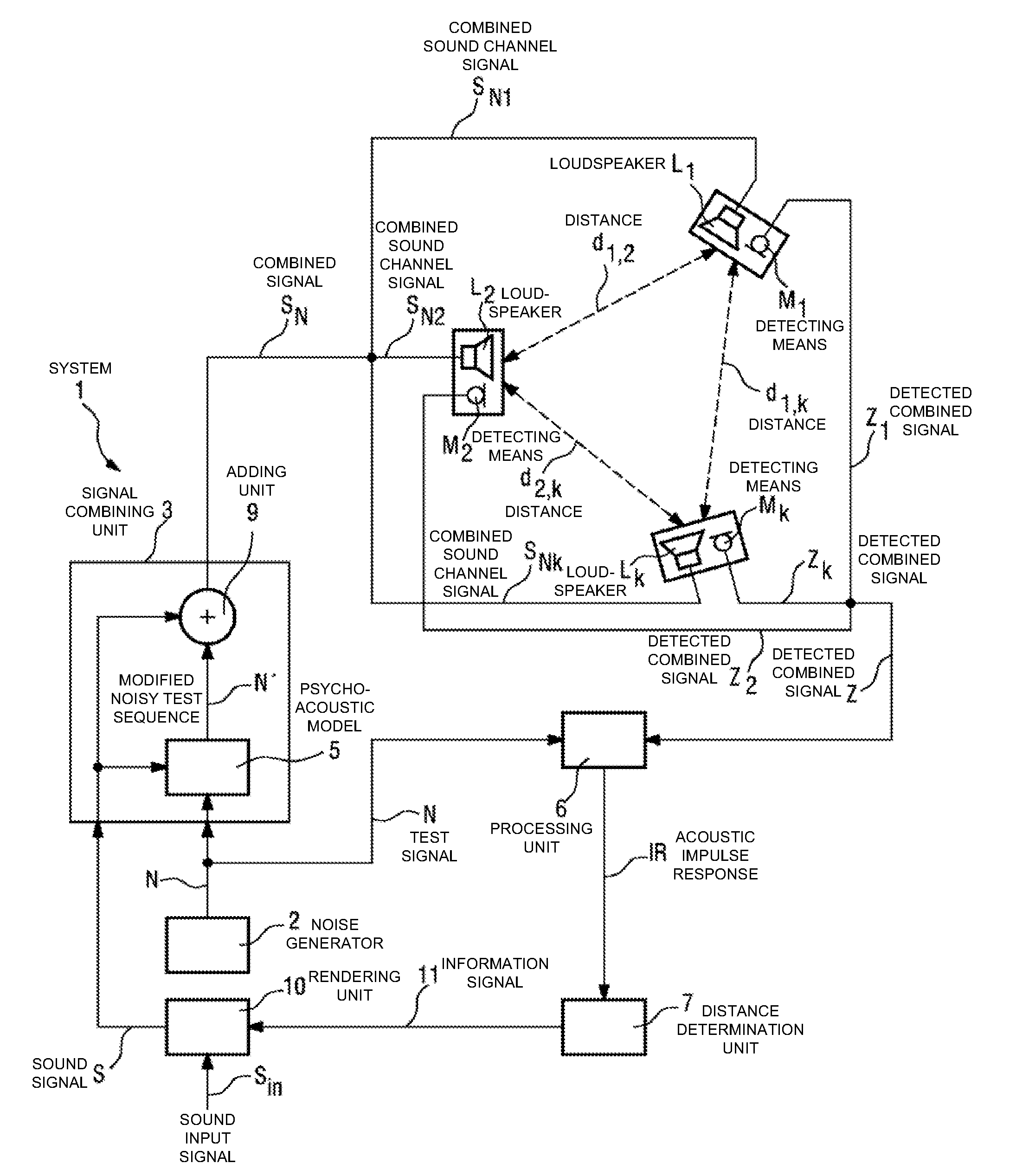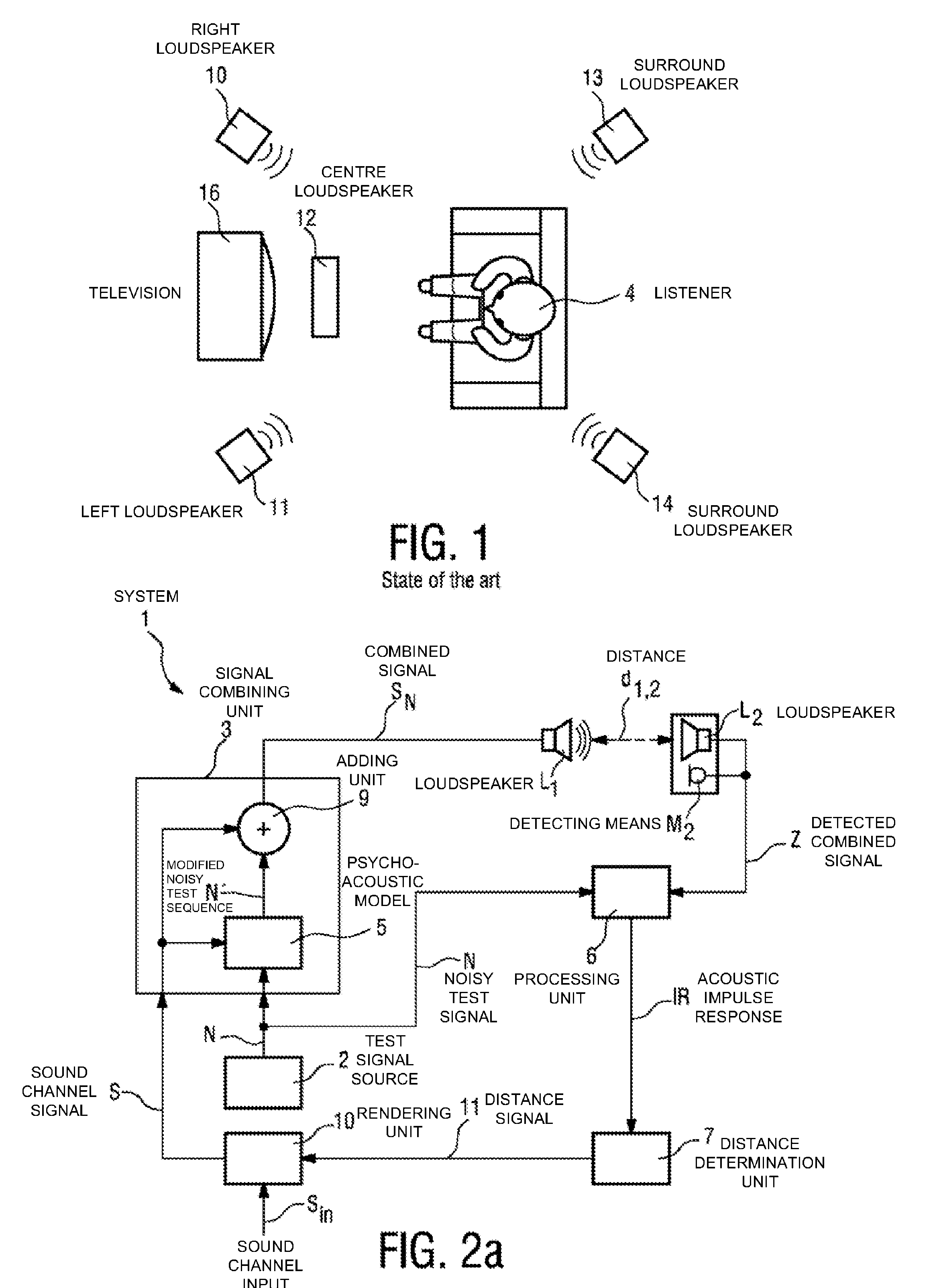Method of and system for determining distances between loudspeakers
a distance measurement and distance technology, applied in the direction of direction finders, loudspeaker enclosure positioning, instruments, etc., can solve the problems of difficult setup for many users, speaker placement might be incorrectly placed about the room, and significantly diminish the quality of the combined audio and video experience, etc., to achieve the effect of convenient and economical
- Summary
- Abstract
- Description
- Claims
- Application Information
AI Technical Summary
Benefits of technology
Problems solved by technology
Method used
Image
Examples
Embodiment Construction
[0042]In the drawings, like numbers refer to like objects throughout.
[0043]FIG. 1 shows a typical loudspeaker setup for an audio or home entertainment system which comprises, in this example, a television 16 and a number of loudspeakers such as a left loudspeaker 11 and a right loudspeaker 10 and a pair of surround loudspeakers 13, 14 distributed about the room. A centre loudspeaker 12 is shown, for the purpose of illustration, at a distance from the television 16, even though such a centre loudspeaker 12 is generally located below the television 16. The television 16 itself might also be equipped with one or more loudspeakers, not shown in the diagram. A listener 4 is shown seated more or less centrally to the loudspeakers 10, 11, 12, 13, 14. Evidently, the loudspeakers 10, 11, 12, 13, and 14 can have been placed at any position in the room, often determined by decorating or physical constraints. Furthermore, the listener 4 need not be seated at a central position. Such a home ente...
PUM
 Login to View More
Login to View More Abstract
Description
Claims
Application Information
 Login to View More
Login to View More - R&D
- Intellectual Property
- Life Sciences
- Materials
- Tech Scout
- Unparalleled Data Quality
- Higher Quality Content
- 60% Fewer Hallucinations
Browse by: Latest US Patents, China's latest patents, Technical Efficacy Thesaurus, Application Domain, Technology Topic, Popular Technical Reports.
© 2025 PatSnap. All rights reserved.Legal|Privacy policy|Modern Slavery Act Transparency Statement|Sitemap|About US| Contact US: help@patsnap.com



